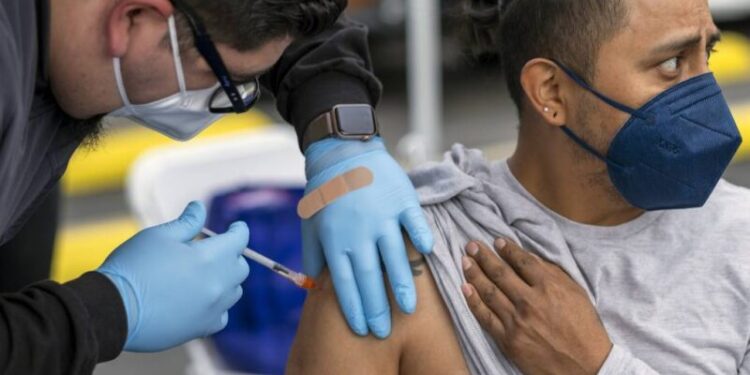“It’s not that sharp, dramatic increase from the beginning of the omicron wave,” said Marlene Wolfe of Emory University, one of the researchers who monitors wastewater sites across Northern California. “It’s something to watch, something to be careful of, something that we are glad we have this data to speak to.”
Here’s what you need to know about BA.2 across California
BA.2 is really good at its job: To date, it’s the most transmissible strain of the coronavirus. A Danish study shows the virus spreads very quickly inside households, and a recent Swedish study shows that the viral loads are twice as high as the original omicron, which helps to explain why the latest strain of COVID-19 is furiously outcompeting its predecessor.
The good news is BA.2 does not appear to lead to more severe symptoms than the original omicron. Patients complain of cough, fatigue, congestion, dizziness and a runny nose.
“It’s not causing more intensive care hospital admissions in Europe,” said Dr. Susan Philip, San Francisco’s health officer. “[This is] a positive thing when we look at the characteristics of this virus.”
How worried should we be?
Not too worried, according to Dr. Bob Wachter, chair of UCSF’s department of medicine. “It might well lead to a small increase in cases, which we should watch carefully,” he said in an email. “It is unlikely to cause a major surge given the extent of [local] vax and infection-related immunity.”
That sentiment is shared by other local experts. UCSF epidemiologist Dr. George Rutherford suspects the impact in Northern California will be “relatively minor.” He estimates immunity coverage in the Bay Area is hovering around 90% due to high vaccine rates and the recent omicron wave, which left many people with natural immunity, at least in the short term. Those two factors wrap the region in a protective layer.
Rutherford points to what he sees as hopeful signs unfolding overseas. “Look at Western European data,” he said. “Cases are going up in some countries and not in others. A surge is not inevitable.”
California cases continue to plummet
It’s not time to panic. Cases across the state have fallen about 32% over the past two weeks. Hospitalizations are not increasing and death rates continue to fall. Some regions are experiencing very slight upticks, but nothing concerning to public health officials.
Still, BA.2 poses the highest risk to anyone who is not vaccinated and did not catch omicron during the last surge. “The consequences for hospitalizations and deaths will be largely determined by how many people are vaccinated and how many older people are boosted,” said Bill Hanage, a Harvard epidemiologist.
This means children who are not yet old enough for a vaccine, as well as many disabled and immunocompromised people, remain at high risk.
If an actual surge were to form, regions with low vaccination rates would be the most vulnerable. In California that means rural areas and parts of the Central Valley.
How can I protect myself?
At this point California health officials are not recommending people make any course corrections to their daily lives. The state has a road map for potential surges, if the situation were to change.
“If we do start to see concerning increases in cases, increased severity or increasing hospitalization — we may need to reinstate some of our prior tools, things like masking,” California State Epidemiologist Dr. Erica Pan told KQED.
She recommends making sure you’re up to date on your vaccinations, and stocking up on home testing kits to protect loved ones.
Should I get a 4th dose if I’m over age 50?
The U.S. Food and Drug Administration announced Tuesday that it has approved a fourth shot for people over 50. Until now the only people authorized for a fourth dose were those with weakened immune systems.
UCSF’s Wachter recommends a fourth shot for older adults who didn’t catch omicron in the last wave. This is especially critical if folks are engaging in riskier behaviors like eating inside restaurants. For those who caught the virus recently, Wachter suggests holding off on a fourth shot for a few months because a recent infection offers similar protection.
There’s compelling mortality data out of Israel suggesting a fourth shot dramatically lowers severe illness. However, the available data is preliminary and it’s not clear how long the benefits of a fourth dose will last.



















